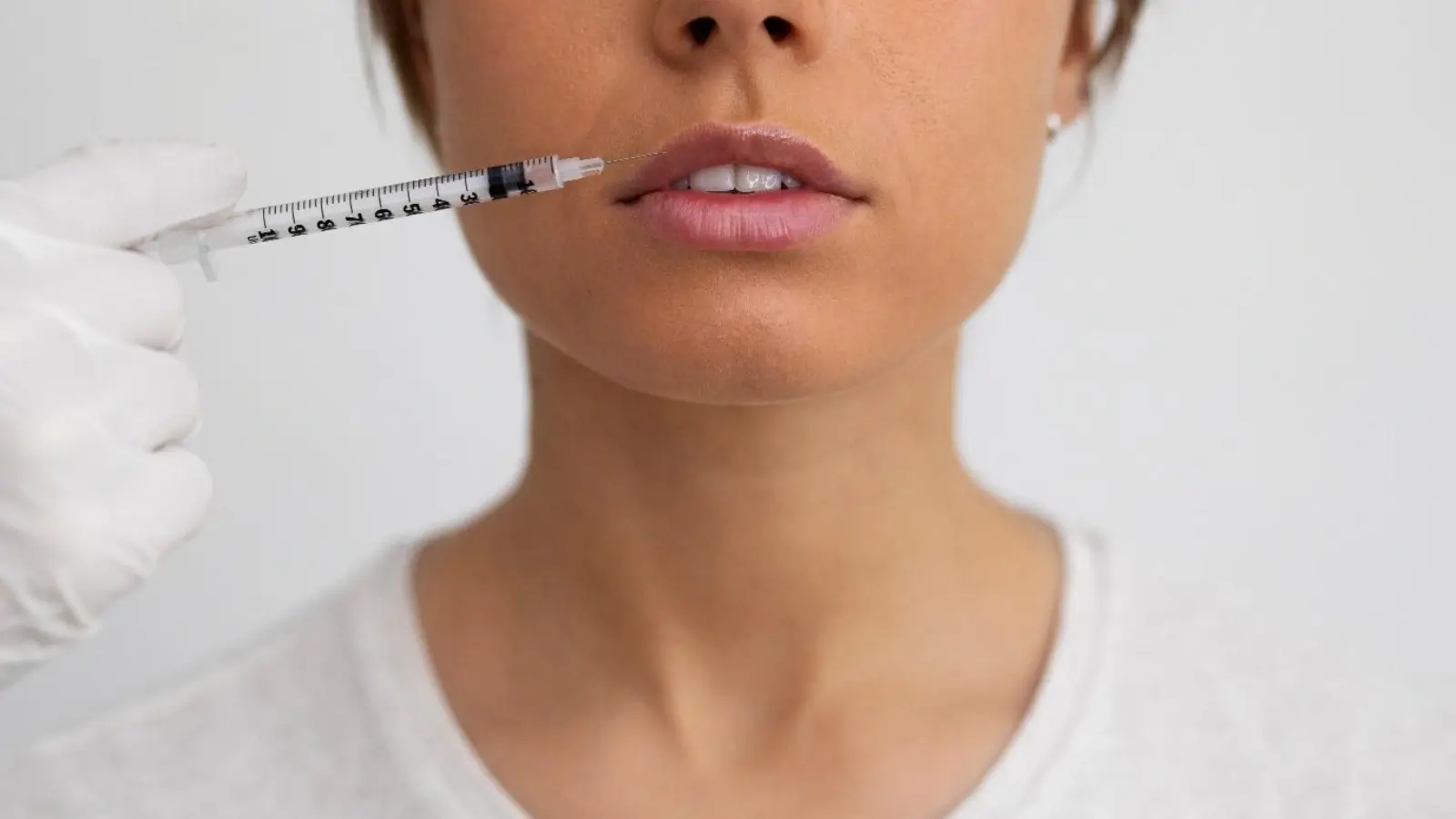


Lips are one of the most expressive parts of the face. They move when we speak, smile, frown, or express subtle emotions. For many people in Hobart, lip treatments provide a way to enhance symmetry, shape, or balance without altering their facial identity. Two of the most popular options are the lip flip and lip filler. While they may seem similar at first glance, they are entirely different in technique, result, and purpose.
Understanding the difference between a lip flip and lip filler is crucial if you want to make an informed decision for your face. Each has distinct advantages depending on your anatomy, aesthetic goals, and tolerance for maintenance. Whether your concern is a receding upper lip, thin lip structure, or gummy smile, understanding how each treatment works will help you make a confident choice.
A lip flip uses Botox to relax the upper lip muscle and reveal more pink lip without volume, while lip filler adds hyaluronic acid to build shape, structure, or fullness.
Lip filler lasts 6 to 12 months, depending on the product and person. A lip flip typically lasts 8 to 12 weeks due to faster muscle activity and smaller Botox doses.
Yes, a lip flip is often more effective for gummy smiles caused by excessive lip movement. It lowers the smile line. Filler only adds volume and won’t stop the lip from lifting too high.
A lip flip uses Botox to soften the movement of the upper lip. The treatment involves injecting small doses of botulinum toxin into targeted points near the orbicularis oris muscle, which surrounds the mouth. By relaxing this muscle slightly, the top lip rolls outward, exposing more of the pink tissue. This creates the appearance of a fuller lip without changing the structure or volume.
Lip filler uses hyaluronic acid gel, injected beneath the skin to add volume, shape, or definition physically. It can be used to augment the upper lip, lower lip, or both. Depending on the technique and product used, filler can reshape the lip border, improve symmetry, or restore lost volume due to ageing.
A key distinction is that the lip flip is a movement-based treatment, whereas filler is a structural treatment. One relaxes, the other builds.
The results of a lip flip are subtle. The upper lip looks slightly fuller, especially when smiling, and there is often less curling or disappearing of the lip during expression. It is ideal for people who want to show more pink lip without adding bulk or changing their natural lip shape.
Lip filler creates more noticeable changes. It can enhance definition, balance proportions, correct asymmetry, or increase the overall size of the lips. The outcome is more customisable and suitable for a wider range of concerns, from age-related volume loss to naturally thin lips.
In Hobart, the preference often leans toward subtle and natural-looking results. A Botox Hobart approach may begin with a lip flip to assess how the lips respond before proceeding with filler. Others prefer to use both treatments together to balance movement and structure.
A lip flip lasts approximately 8 to 12 weeks. The duration depends on how quickly your body metabolises Botox and how active your lip muscles are. Because the product is injected into a muscle that moves frequently, it tends to wear off faster than Botox used elsewhere on the face.
Lip filler lasts longer. Most hyaluronic acid fillers remain effective for 6 to 12 months, depending on the specific product used, the placement technique employed, and individual factors such as metabolism and lifestyle. Some clients find their filler breaks down faster with high physical activity, while others maintain results for longer than expected.
The shorter duration of the lip flip appeals to those who want a temporary change or are unsure about making long-term alterations. Lip filler is often preferred for clients who want lasting improvement or have structural concerns that Botox cannot address.
If your lips are structurally thin with little volume at rest, lip filler is usually the better choice. It can build shape, define the vermilion border, and enhance overall proportions. Filler is especially useful if the goal is to create balance between the upper and lower lip or to correct congenital asymmetry.
A lip flip will not increase volume. Instead, it creates the illusion of fullness by changing muscle tension. This works well for clients whose lips appear thinner in motion but are reasonably full at rest. For example, someone whose upper lip disappears when they smile may benefit from Botox, even if their lip shape appears adequate when at rest.
In some cases, a combination of both treatments delivers the best outcome. A small amount of filler can add structure, while a lip flip softens the muscle pull to reveal more of the pink lip during movement. The approach depends entirely on the individual's anatomy and treatment goals.
A gummy smile is often caused by strong upper lip muscles that pull the lip too high during expression, revealing excessive gum tissue. In such cases, a lip flip can serve as a non-surgical alternative to reduce the appearance of a gummy smile.
By relaxing the upper portion of the orbicularis oris and, in some cases, adjacent levator muscles, the Botox prevents the lip from rising as high when smiling. This lowers the smile line slightly, bringing more attention to the lips and teeth rather than the gums.
Lip filler is less effective for gummy smiles unless the issue is related to lip shape or volume. In those cases, a filler can be used to add height or projection to the lip, but it cannot reduce the height of the smile line itself.
For clients with gummy smiles in Hobart, the decision between lip filler vs lip flip often comes down to cause. If muscle movement is to blame, Botox is the first step. If volume or lip length is the concern, filler may offer more support.
The lip flip procedure is quick and low-fuss. After a brief consultation, the injector places a small amount of Botox into four to six points along the upper lip line. The injections are shallow and use a fine needle. Most clients describe the sensation as a mild pinch. There is minimal aftercare, and normal activity can resume immediately.
Lip filler appointments are longer and require more planning. The practitioner assesses the lips, surrounding structure, and any asymmetries. A numbing cream is often applied for comfort. The filler is then placed strategically using either a needle or a cannula, depending on the area and desired result. Some swelling or bruising is normal and usually settles within a few days.
Because filler adds volume, the results are visible immediately, although they may take up to two weeks to fully settle. The lip flip result appears more gradually, usually within three to seven days.
The lip flip is a fast, subtle, and cost-effective procedure. It is ideal for muscle-dominant lips, gummy smiles, or clients seeking a low-commitment treatment. It cannot increase volume, reshape the lips, or correct deeper asymmetries.
Lip filler is versatile and suitable for a wide range of aesthetic concerns. It can provide structure, correct lip proportions, and enhance definition. It requires a longer appointment, may cause more swelling, and is a higher-cost treatment upfront. However, it lasts significantly longer and offers more dramatic improvements where needed.
One is not better than the other. They serve different functions and are sometimes used in conjunction with each other in clinical practice.
Yes. Many people combine both for balance. The flip softens movement while filler builds structure, giving a fuller look without overdoing either treatment.
A lip flip uses fewer, shallower injections and is generally quicker and less uncomfortable. Lip filler may involve swelling and uses more product and technique.
People who rely on tight lip movement for speaking, singing, or using wind instruments may notice a change. It is also not suitable during pregnancy or breastfeeding.
In most cases, no. Properly placed filler should feel natural once settled. Temporary swelling may affect sensation for a few days, but normal function returns quickly.
No. A lip flip changes muscle movement but not lip structure. Filler is better suited to correct asymmetry or restore balance between the upper and lower lips.
A clinical assessment of your lip shape, muscle function, and smile dynamics is the most effective way to determine the best course of action. Each treatment is suited to different goals and types of anatomy.
Choosing between a lip flip and lip filler depends on what you’re hoping to achieve. If your lips vanish when you smile or feel too tight, Botox may be the simplest solution. If your lips are thin at rest or lack volume, filler is likely a more suitable option.
The right approach comes from a full facial assessment. Factors such as lip structure, muscle movement, facial proportions, and overall expression all contribute to the decision. In Hobart, clinics like ours perform a thorough analysis before recommending treatment. This ensures results are not only effective but also appropriate to your natural anatomy and lifestyle.
Clients sometimes begin with a lip flip to test the waters, then decide later whether filler is needed. Others know from the outset that their goals require a combination approach.
Both treatments offer subtle, controlled improvements when performed correctly. They are not about changing your face but enhancing what is already there.
For those considering either treatment in Tasmania, exploring both lip filler vs lip flip options is an essential part of the consultation process. This ensures the result feels right, looks natural, and suits the dynamic movement of your lips.